Electric water heaters draw a great deal of power. If someone needs to repair or replace your unit, identifying the correct breaker is a safety issue. Unfortunately, many homeowners open their electrical panel and discover it is unlabeled or mislabeled, leading to confusion. Finding the right breaker for your home’s water heater shouldn’t feel like guesswork.
In the United States, the National Electrical Code (NEC) plays a major role in determining how water heaters are wired and the location of their circuit breaker. Understanding these rules will make the search easier.
For readers outside the U.S., keep in mind that electrical codes differ internationally. This article focuses on U.S. installations, but wiring layouts and disconnect requirements vary widely across countries that follow International Electrotechnical Commission (IEC)-based standards.
A Standard Water Heater Breaker Set Up
Most full-size residential electric water heaters in the U.S. are hardwired into a dedicated 240-volt circuit. There is no plug to remove and no outlet involved. Instead, the electrical cable feeds directly from the panel to the heater through a junction box or conduit. Only a qualified electrician should handle changes or repairs to a hardwired circuit.
Because the heater draws several thousand watts, it requires a double-pole breaker. You can easily identify this type of breaker since it takes up two adjacent slots in the electrical panel. These breakers also have a tied handle, ensuring both circuits turn on and off at the same time. Keep in mind that several large appliances require double-pole breakers, so the first one you see may not belong to the water heater.

Other devices that require this type of breaker include:
- Clothes dryers
- Central air conditioners
- EV chargers
- Electric ranges
NEC Rules That Influence Breaker Location
The NEC, particularly Article 422 (Appliances), establishes specific requirements for safely powering down appliances like electric water heaters:
1. Disconnecting Means Required
Every hardwired electric water heater must have a disconnecting means that shuts off all ungrounded conductors at once. In most homes, the double-pole breaker in the main panel serves this purpose.
2. The “Within Sight” Rule
The NEC requires that the disconnect/circuit breaker panel be visible from the water heater, meaning someone standing at the unit should have a clear sightline. The heater should also be no more than 50 feet away from the panel.
However, since this arrangement is not always practical, the alternative is to make the circuit breaker for water heater lockable in the OFF position. Electricians often add a breaker lockout device for safety during service.
3. Alternative Configurations
New types of units and new water heating technology have created exceptions to these rules that still meet NEC standards. variations include:
- A cord-and-plug disconnect for small units, usually coupled with a GFCI outlet. This type of unit does not require a double-pole breaker.
- A built-in power switch on certain tankless models.
Step-by-Step: How to Find the Breaker for Your Water Heater
Even if your panel is poorly labeled, you can still identify the correct breaker safely without exposing any wiring or opening any junction boxes.
Step 1: Locate Your Electrical Panel
Panels are commonly found in garages, basements, laundry rooms, hallways, or utility areas.
Step 2: Check the Labeling
Look for labels such as “water heater,” “HWH,” or “WH.” If you are at all uncertain, treat labels as helpful hints, not facts. Mislabeled panels are common.
Step 3: Identify the Double-Pole Breakers
Scan for breakers that take up two slots and have a tied handle. Your water heater is likely on one of these.
Step 4: Observe the Water Heater’s Activity
If you recently used hot water, the heater may be actively heating. Some units make a faint noise when running, though this is not always reliable.
Step 5: Flip the Suspected Breaker Off and Verify Power Loss
Once you identify the likely breaker:
- Turn it OFF.
- Wait a few minutes.
- Check if the heater stops producing hot water.
For hardwired heaters, someone with electrical experience can use a voltage tester or multimeter to confirm there is no electricity at the unit.
Step 6: Use a Breaker Finder for Some Plug-In Models
If you have a smaller, point-of-use heater that plugs into a standard household outlet, you may be able to use the circuit breaker finder.

- Plug the transmitter into the heater’s outlet.
- Scan the breaker panel with the receiver to locate the correct breaker. When it detects the transmitter’s signal, it will beep or flash.
- Turn off the breaker.
- Confirm power is off at the water heater.
KAIWEETS KT301P Circuit Breaker Finder
The KAIWEETS KT301P is a 3-in-1 device that combines a digital circuit breaker locator, outlet tester, and GFCI tester. It features an LCD display, NCV mode for non-contact voltage detection, and a built-in flashlight for safe and efficient electrical work.
Full specs & features.
Important Safety Tips
- Never open a water heater’s junction box unless you are a qualified electrician.
- Always verify power is off before attempting any work on or around an electrical appliance.
- When in doubt, call a licensed electrician. There is no safe shortcut for working on a 240-volt circuit.
Finding the breaker for a water heater is much easier when you understand the setup of these circuits. Since most U.S. water heaters are hardwired to a dedicated double-pole breaker, locating the correct breaker is usually a matter of identifying the right one in the panel. For plug-in, point-of-use models on a 120V circuit, a circuit breaker finder can help confirm the correct breaker without guesswork.
With all electrical devices, the priority is simple: stay safe and make sure the correct breaker is shut off before beginning any work.
FAQs
Why does my water heater use a double-pole breaker?
Electric water heaters run on a 240-volt circuit. A double-pole breaker switches both hot wires simultaneously, which is required by the NEC. This type of breaker also prevents one hot leg from remaining energized while the other is off, which could create dangerous conditions during service.
What size breaker for a water heater?
Most standard U.S. electric water heaters (typically 4,500 to 5,500 watts) run on 240 volts and use a 30-amp, double-pole breaker. Larger or high-output models may need 40 or 50 amps, so check the heater’s nameplate to confirm the required breaker size.
How do I know if my water heater is hardwired?
Most full-size residential electric water heaters in the U.S. are hardwired. This means the electrical cable runs directly into the unit rather than ending in a plug. If your heater is connected with flexible conduit or metal-clad cable and you do not see an outlet nearby, it’s hardwired.
Can I use a circuit breaker finder on a hardwired water heater?
No. Breaker finders must only be used on circuits that fall within the tool’s rated voltage range. Hardwired water heaters operate on 240V circuits, and using a breaker finder on them can cause false readings and safety risks.
What should I do if none of my breakers are labeled or the labeling seems wrong?
This is a common situation because the labeling process can be time-consuming. In many cases, you can use a circuit breaker finder to identify the different 120V circuits in your home. For unlabeled hardwired appliances, you will need to confirm that power has been shut off at the unit.

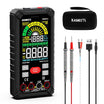
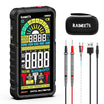
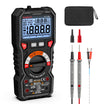
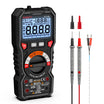



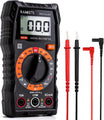
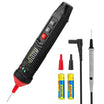
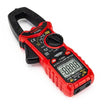
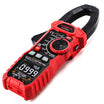
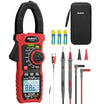
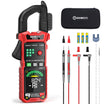
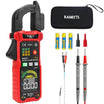
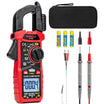
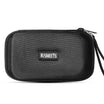
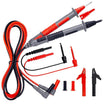
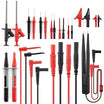
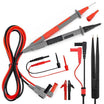
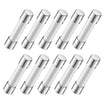
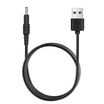
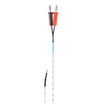

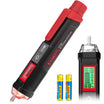
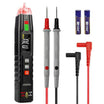

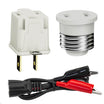
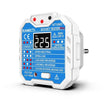

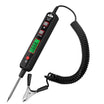
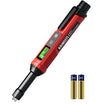
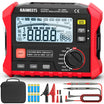
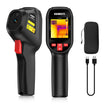
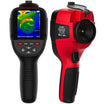
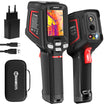
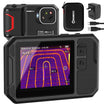
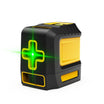


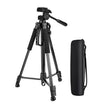
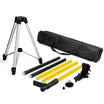
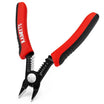
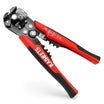
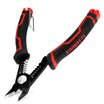
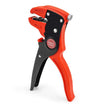

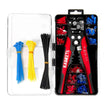
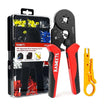
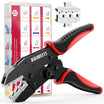
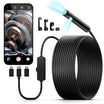
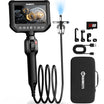
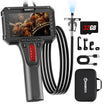
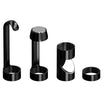
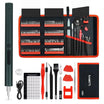
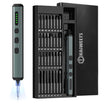
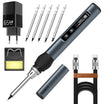
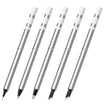
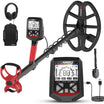
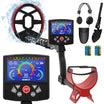
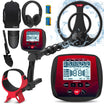

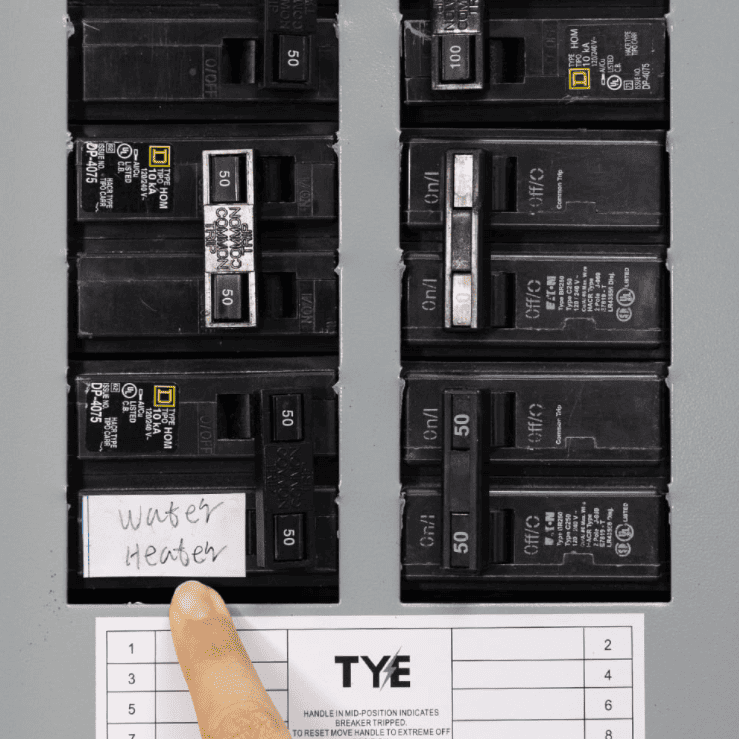

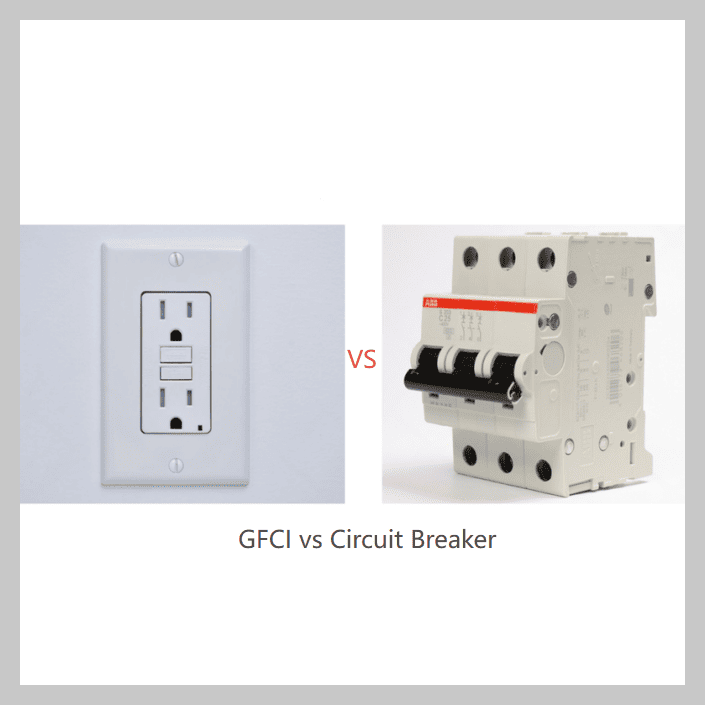
Dejar un comentario
Todos los comentarios se revisan antes de su publicación.
Este sitio está protegido por hCaptcha y se aplican la Política de privacidad de hCaptcha y los Términos del servicio.